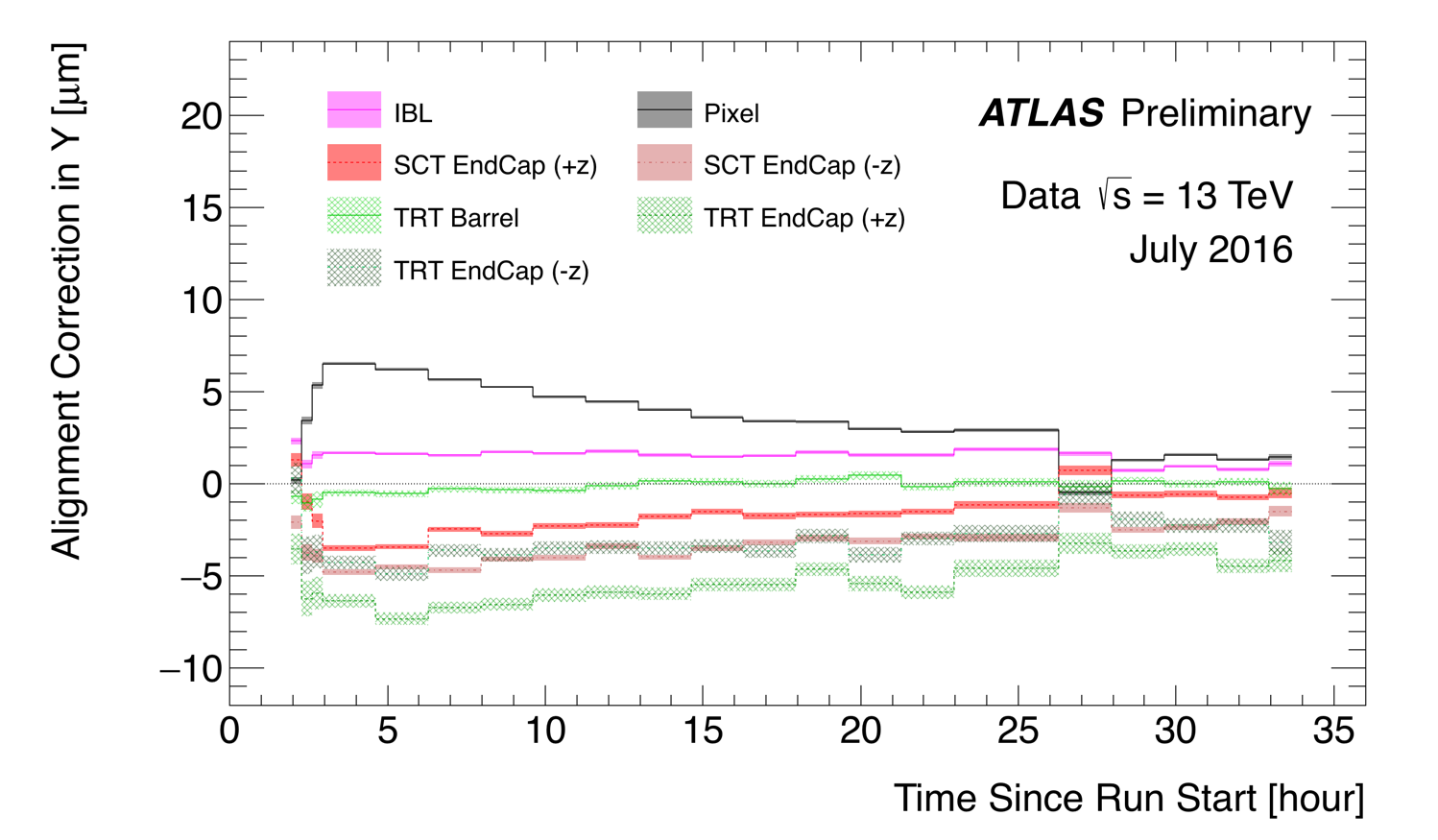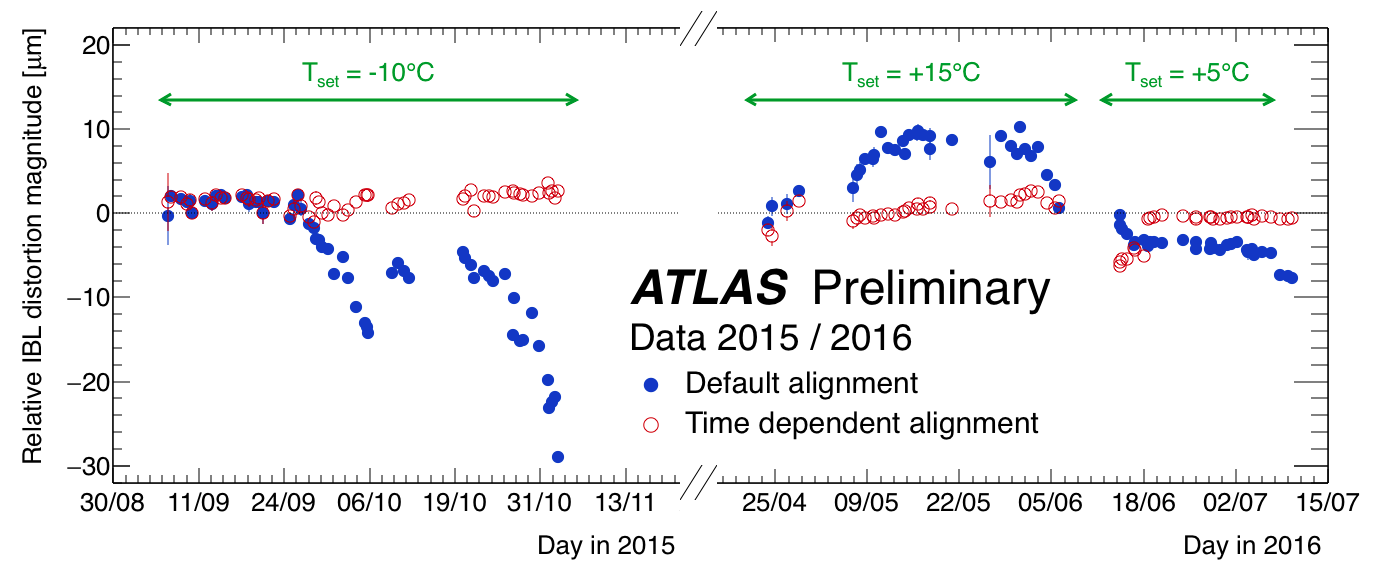Tracker Alignment
The physics performance of the ATLAS experiment depends, among many other issues, on the accurate determination of the alignment parameters of the tracking sensors. Actually a precise track reconstruction is a key ingredient of almost all physics analysis of the experiment.
The ATLAS Inner Detector tracking system is built from 3 sub-systems mixing different technologies: silicon pixels, silicon strips and gas drift tubes.In total there are more 36,672 silicon modules (pixels planar, pixels 3D and microstrips) and more than 350,000 drift tubes. The alignment consists in determining the location and orientation of each of the sensors. This requires to determine almost 750,000 degrees of freedom. That represents a considerable numerical challenge in terms of both CPU time and precision. The alignment is thus executed in a hierarchical level. The big structures (barrel layers, end caps disk, etc) holding many modules and suffering the larger movements are aligned first,followed by the alignment the smaller structures (in an increasing of granurality).
As the alignment constants of the detector have to be provided before the processing of the data, the Inner Detector alignment is executed at the ATLAS calibration loop. There, several iterations of the alignment are executed at different alignment levels and finally a set of constants are produced. All in less than 24 hours after the data were recorded. Therefore one needs to monitor the quality of the alignment constants out of the calibration loop ( web monitor ). In the calibration loop, the detector is aligned every 20 minutes in order to correct the possible detector fast movements.
The systematics of the alignment are evaluated on the long term with a detailed study of some resonances and their reconstructed decay products. For instance the Z decay into muons is used to evaluate the systematics in the reconstructed momentum of relatively high momentum, while J/psi decay into muons and Kshort decays into pions help to check the momentum of low momentum tracks. The momentum scale is also croschecked with the E/p method for electrons from W and Z decays. The impact parameter systematics are evaluated with the muons from the Z decays.






